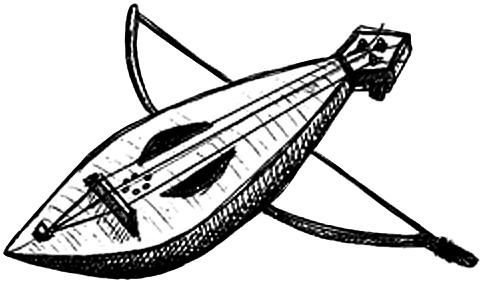Other names Hudok | ||
 | ||
Hornbostel–Sachs classification (Bowl lyre sounded by a bow) | ||
The gudok or hudok (Russian: гудок, Ukrainian: гудок) is an ancient Eastern Slavic string musical instrument, played with a bow.
A gudok usually had three strings, two of them tuned in unison and played as a drone, the third tuned a fifth higher. All three strings were in the same plane at the bridge, so that a bow could make them all sound simultaneously. Sometimes the gudok also had several sympathetic strings (up to eight) under the sounding board. These made the gudok's sound warm and rich.
The player held the gudok on his lap, like a cello or viola da gamba. It was also possible to play the gudok while standing and even while dancing, which made it popular among skomorokhs. Initially in the 12th century (and probably before), the gudok did not have a neck for pressing strings. This suggests that it was played by stopping the strings from the side with fingernails (similarly to the Byzantine lyra), rather than pressing strings onto the instrument's neck. Later in the 14th century some modifications of the gudok had a real neck for pressing strings.
Russian gudok ceased to exist as a folk instrument for several centuries. All present instruments are replicas, based on several parts of gudoks found in the Novgorod excavations.
There have been several attempts to revive the gudok in music. Borodin's opera Prince Igor contains a "Gudok Player's Song", which is an artistic reconstruction of how the gudok may have sounded.
The Ukrainian hudok contained a drone tuned to a fifth similar to that of the Ukrainian lira. In Western Ukraine, particularly in the Carpathian mountains the term hudok is also used for folk violins and smaller oboes.
